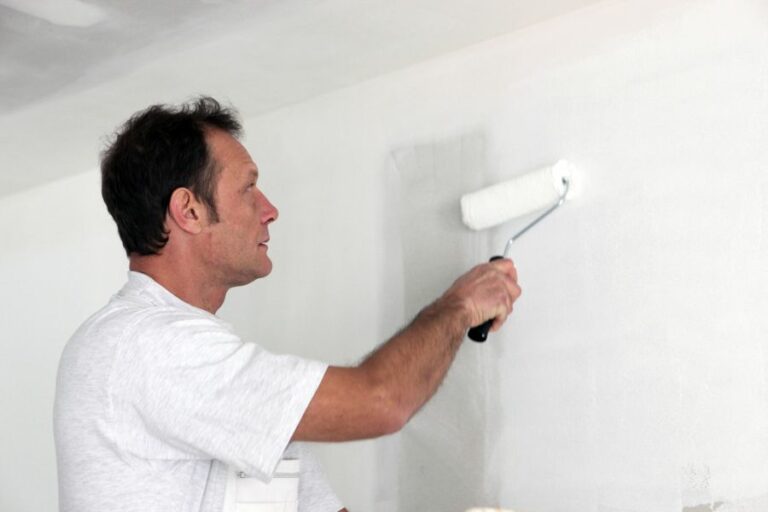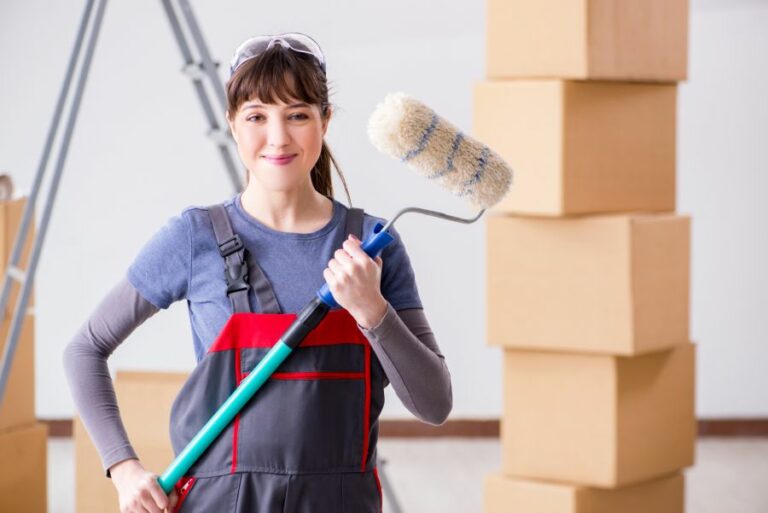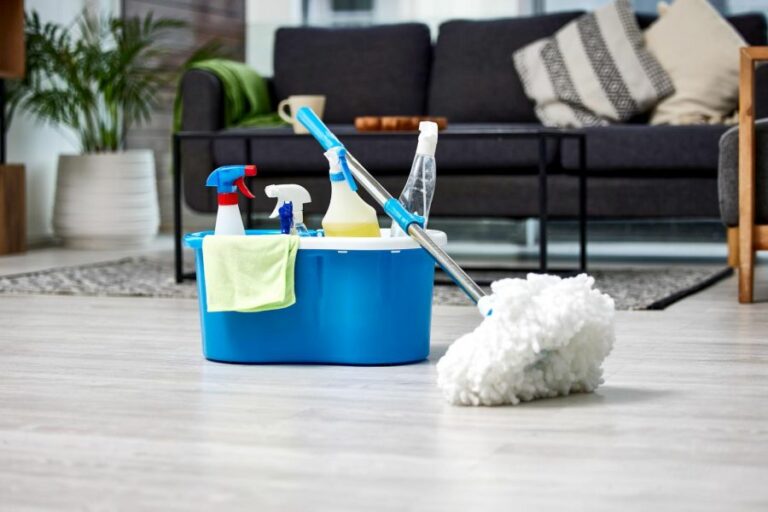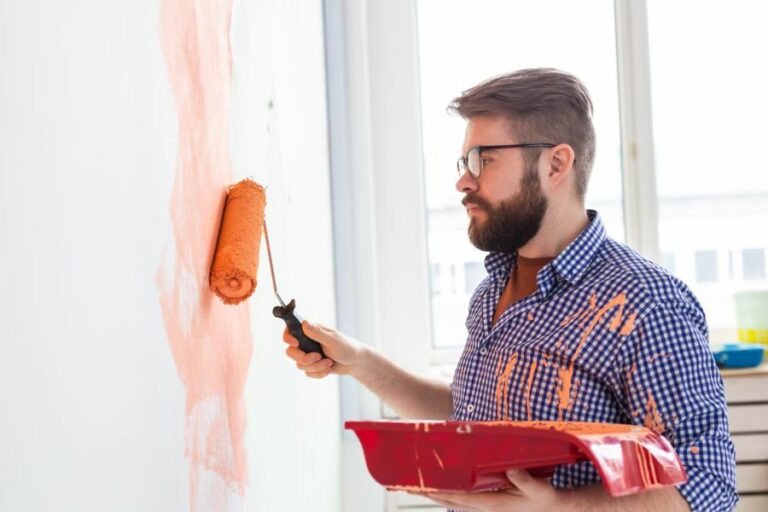Key Abrasives Used In Surface Prep Techniques. What Pros Say
Understanding the various types of abrasives used in surface preparation techniques is crucial for achieving the desired results in a diverse range of projects. As experts in this field, we’ve compiled a comprehensive guide on key abrasives, ensuring you can make informed decisions and deliver high-quality work.
Key abrasives used in surface prep techniques:
Key abrasives used in surface preparation techniques include aluminum oxide, silicon carbide, steel grit, glass beads, and garnet. These abrasives are essential for achieving optimal results in various applications such as painting, coating, and bonding by effectively removing contaminants from surfaces.

Discover the crucial role abrasives play in surface preparation techniques. From sandpaper to steel wool, we explore their variety, uses, and benefits in achieving a perfect finish. Curious? Read on!
Contents
Essential Abrasives for Surface Preparation Techniques
Proper surface preparation is crucial for achieving optimal results in numerous applications like painting, coating, and bonding. Various abrasives play a significant role in the surface preparation process.
• Popular Abrasives for Surface Preparation
– Aluminum Oxide
Aluminum oxide is a commonly used abrasive renowned for its durability, aggressiveness, and versatility. It is available in various grit sizes, making it suitable for a wide range of surface prep applications.
Due to its tough and sharp grains, aluminum oxide is highly effective in removing rust, paint, and other contaminants from various surfaces.
In addition to its effectiveness, aluminum oxide is notable for its economic efficiency. It can be reused multiple times before losing its abrasive qualities, leading to reduced costs in surface preparation projects.
I recommend using aluminum oxide in applications such as industrial maintenance, automotive refinishing, woodworking, and metalworking.
– Silicon Carbide
Silicon carbide is another widely used abrasive for surface preparation. It is especially suitable for non-metallic surfaces, thanks to its sharp and hard characteristics. The hardness of silicon carbide abrasives enables them to penetrate various surface materials, leading to the efficient removal of contaminants.
Silicon carbide abrasives are highly effective in applications like stone polishing, glass grinding, and ceramic surface preparation. They are also suitable for automotive industries as they facilitate the removal of paint, rust, and corrosion.
– Steel Grit
Steel grit is a highly aggressive and durable abrasive, suitable for extensive surface preparation. It features angular grains, which effectively remove contaminants like paint, rust, and scale from metallic surfaces.
Due to its aggressive nature, steel grit is primarily recommended for use in heavy-duty applications. Industries such as shipbuilding, steel fabrication, and oil refineries often employ steel grit for surface preparation tasks.
– Glass Beads
Glass beads are spherical, non-angular abrasives that provide a gentle, consistent, and smooth finish to surfaces. They are used in applications where maintaining the underlying material’s form is of utmost importance.
Glass beads are ideal for peening, deburring, and cleaning applications in the automotive, aerospace, and electronics industries. As glass beads preserve the base material’s form, they are suitable for surface preparation tasks in precision engineering and intricate components.
– Garnet
Garnet is a naturally occurring mineral abrasive known for its resilience, longevity, and environmentally friendly properties. It is available in various grit sizes, suitable for different surface preparation applications.
Garnet abrasives are highly effective in waterjet cutting and sandblasting applications. Industries such as shipbuilding, metal fabrication, and automotive often use garnet abrasives for removing rust, paint, and other contaminants.
While relatively more costly than other abrasives, garnet is a reliable choice if environmental concerns are a priority.
• Making the Right Choice
Choosing the correct abrasive for your surface preparation needs is crucial for achieving desired results. Factors such as the material being prepared, application method, and environmental concerns should all be considered.
In conclusion, understanding the unique properties and applications of key abrasives like aluminum oxide, silicon carbide, steel grit, glass beads, and garnet can play a significant role in ensuring an efficient surface preparation process and optimal outcomes.
Exploring Various Surface Preparation Techniques
Surface preparation is a vital step in many industrial processes, as the adhesion, performance, and longevity of coatings, adhesives, and sealants depend largely on the quality of the prepared surface. There are several methods used in surface preparation, each with its advantages and disadvantages.
• Mechanical Surface Preparation
– Abrasive Blasting
Abrasive blasting, also known as sandblasting or grit blasting, involves the use of high-pressure air or water to propel abrasive particles onto a surface. This method effectively removes contaminants, roughens smooth surfaces, and smoothes rough surfaces.
Abrasive blasting can be performed using a variety of abrasive materials such as sand, glass, steel grit, or plastic media. The choice of abrasive material depends on the surface material and the desired surface finish.
It is essential, however, to ensure proper containment and disposal of the used abrasive material, as it can pose environmental and health risks.
– Grinding and Polishing
Grinding and polishing are surface preparation methods that involve the use of abrasive wheels or pads to remove surface contaminants, level irregularities, and impart the desired surface finish.
Common types of grinding and polishing equipment include angle grinders, floor grinders, and polishing machines, with the choice of abrasive media depending on the material to be treated and the desired outcome. This method is widely used in the preparation of concrete, metal, and wood surfaces.
I recommend employing a skilled operator when using grinding and polishing equipment, as incorrect usage can cause excessive material removal or surface damage.
• Chemical Surface Preparation
– Acid Etching
Acid etching involves applying a diluted acid solution (such as phosphoric or hydrochloric acid) to the surface to remove contaminants and roughen the surface. The acid reaction with the surface creates a profile that enhances adhesion for subsequent coatings or treatments.
Acid etching is commonly employed for surface preparation of concrete, where it helps remove laitance, a weak surface layer of cement, and aggregate dust.
It is essential to neutralize and thoroughly rinse the surface after acid etching to prevent residue-related problems. I’ve found that using a pH tester to ensure proper neutralization can save time and reduce the risks of poor results.
– Solvent Cleaning
Solvent cleaning is a method using organic solvents like acetone or alcohol to remove grease, oil, and other contaminants from a surface. The solvents dissolve or disperse the contaminants, allowing them to evaporate or be removed with a cloth or brush.
Solvent cleaning is often used as a precleaning step before employing other surface preparation methods to ensure the best results.
However, solvent cleaning may not remove all contaminants, especially those that are insoluble in the chosen solvent. Care should also be taken in handling, using, and disposing of solvents, as they can be hazardous to health and the environment.
• Thermal Surface Preparation
– Flame Cleaning
Flame cleaning is a method using a high-temperature flame (such as propane or oxy-acetylene torches) to heat the surface and remove contaminants. The heat causes contaminants like oil, grease, and rust to decompose or burn off, and it can cause a surface profile change that enhances adhesion.
Flame cleaning is particularly useful for preparing large steel surfaces, like in shipbuilding or structural steel industries.
Proper safety measures must be in place when flame cleaning, as the risk of burns, fires, and harmful fume exposure is present.
– Laser Ablation
Laser ablation uses high-energy laser beams to remove contaminants and modify the surface structure without causing physical damage to the material. This method provides precise control over material removal and generates minimal waste.
Laser ablation is often used in specialized applications, such as semiconductor production and the aerospace industry, where precise and localized surface preparation is crucial.
As laser ablation can be an expensive and specialized process, it may not be suitable for all applications or budgets.
In conclusion, the choice of surface preparation method depends on various factors such as the material to be treated, the desired surface finish, environmental considerations, and project requirements.
A combination of techniques may be employed to achieve the best results, and seeking expert advice from surface preparation professionals is advisable to ensure proper technique selection, execution, and safety.
Method | Description |
|---|---|
Abrasive blasting | Removal of surface contaminants and roughening of the surface using high-pressure air and abrasive particles. |
Chemical cleaning | Removal of surface contaminants and unwanted coatings using chemicals, such as acids or solvents. |
Grinding | Removal of surface imperfections and roughening of the surface using abrasive grinding wheels. |
Scraping | Manual removal of surface contaminants or coatings using tools such as scrapers or wire brushes. |
Power tool cleaning | Removal of surface contaminants or coatings using power tools, such as wire wheels, needle guns, or sanders. |
Ultrasonic cleaning | Removal of surface contaminants using high-frequency sound waves and an appropriate cleaning solution. |
Laser cleaning | Removal of surface contaminants or coatings using precise laser technology with minimal impact on the substrate material. |
Water blasting (pressure washing) | Removal of surface contaminants using high-pressure water streams, sometimes combined with added abrasive particles or cleaning agents. |
Abrasive Surface Etching Methods for Material Cleaning
Etching the surface of a material can be achieved through various abrasive cleaning methods. These processes involve the use of media such as sand, glass beads, or other abrasive materials to remove a layer of the target material, creating a desired texture or pattern.
• Sandblasting
Sandblasting is a popular method for achieving surface etching, using high-pressure air to blast sand or other abrasive materials onto the material of interest.
This process effectively removes a layer of the surface, revealing a different texture or pattern beneath it, making it ideal for creating intricate designs on glass, metal, and other durable surfaces.
Recommendation: For a controlled and precise sandblasting operation, a blast cabinet is highly recommended, as it provides containment of the abrasive material and protects the user from potential harm.
• Bead Blasting
Bead blasting is another common method for etching material surfaces, using fine glass beads as the abrasive media. This technique is often used for polishing, cleaning, and deburring metal surfaces, as well as creating an etched pattern on glass surfaces.
Recommendation: Bead blasting typically requires specialized equipment, such as dedicated bead blasting cabinets or rooms, in order to ensure proper containment of the glass beads and maintain a safe working environment.
• Abrasive Jet Machining
Abrasive jet machining (AJM) is an advanced technique for etching material surfaces, utilizing a high-velocity stream of abrasive materials forced by a jet of pressurized gas. AJM is a non-contact method, meaning that there is no mechanical contact between the tool and the workpiece.
The absence of mechanical forces reduces the risk of damage to the material, permitting the process to be used for delicate and sensitive materials.
Recommendation: Abrasive jet machining is best suited for intricate and precise etching projects on delicate materials, such as electronics, semiconductors, and precision components.
• Brushing and Buffing
Brushing and buffing techniques are manual abrasive cleaning methods that can be used for etching material surfaces. These processes involve using abrasive-embedded brushes and/or buffing wheels to remove material from the surface, creating a desired texture.
Recommendation: Brushing and buffing are ideal for small-scale projects that do not require extensive material removals, such as creating a weathered look on wood or an oxidized appearance on metal surfaces.
• Ultrasonic Abrasive Processing
Ultrasonic abrasive processing is a unique and modern approach to achieving surface etching by utilizing ultrasonic vibrations to propagate abrasive particles through a fluid (typically water or oil).
This process enables a controlled and precise removal of material from the surface, making it suitable for applications where the depth of etching is critical.
Recommendation: Due to the precise nature of this technique, ultrasonic abrasive processing is recommended for critical applications where a specified etching depth or intricate patterns must be achieved.
• Choosing the Right Abrasive Cleaning Method for Etching
Selecting the appropriate abrasive cleaning method for etching a material surface is crucial for achieving the desired result. Considerations include the hardness and sensitivity of the material, the intricacy of the pattern or texture to be etched, and the tools and equipment available for the project.
Recommendation: It is important to consult with experienced professionals or manufacturers’ guidelines when choosing the abrasive cleaning method and selecting the appropriate abrasive materials in order to ensure the best results and prevent damage to the surface being etched.
In conclusion, there are various abrasive cleaning methods available for etching material surfaces, such as sandblasting, bead blasting, abrasive jet machining, brushing and buffing, and ultrasonic abrasive processing.
By understanding the advantages and limitations of each technique, as well as considering the material characteristics and desired results, the optimal method can be chosen for any etching project.
With careful planning and execution, these abrasive cleaning methods can create stunning results on a wide range of materials.
The Role of Abrasives in Painting Applications
Abrasives play a crucial role in the world of painting. From preparation to finishing, they serve various purposes that greatly improve the painting process and final outcome.
• Surface Preparation
One of the primary uses of abrasives in painting is surface preparation. Before any paint or coating is applied to a surface, it needs to be properly prepared to ensure a smooth and long-lasting finish.
Abrasives, such as sandpaper or steel wool, are used to remove dirt, loose paint, and any other imperfections that could hinder paint adhesion or cause an uneven finish.
– Sanding
Sanding is a vital step in the surface preparation process, using sandpaper or other abrasive materials to smoothen the surface and remove imperfections.
There are various grits available, with lower grit numbers providing more substantial material removal and higher grit numbers offering a smoother finish. Generally, starting with lower-grit sandpaper and working your way up to higher grits ensures an even and properly prepared surface.
I recommend starting with 80-grit sandpaper for rough surfaces and moving up to 220-grit or higher for final smoothing before painting.
– Steel Wool
For more delicate surfaces or areas where sandpaper may not easily reach, steel wool can be a useful abrasive tool. It is also beneficial when working with wood, as it follows the grain more effectively than sandpaper.
Be cautious with steel wool around metal objects, as it can leave behind particles that could potentially rust when exposed to moisture.
– Surface Cleaning
After the surface has been sanded, it is essential to clean it thoroughly to ensure paint adhesion. A tack cloth or damp rag can be used to remove any remaining dust or debris from the surface, and a mild detergent solution may be required for particularly grimy surfaces.
• Paint Stripping and Removal
Another common use of abrasives in painting is to remove old paint or coatings that may be peeling, chipping, or otherwise compromised. Various techniques, tools, and abrasive materials can be used to accomplish this task, depending on the type and extent of paint that needs to be removed.
– Using Scrapers
For heavy paint layers or stubborn coatings, using a manual or powered scraper is an effective removal method. When using a manual scraper, be sure to angle the scraper away from the surface to avoid gouges or scratches.
– Sanding and Grinding
In conjunction with scrapers, sanding or grinding can be used to remove old paint further and smoothen uneven surfaces. It is important to start with a lower-grit abrasive material, such as 80-grit sandpaper, and work your way up to a higher grit as needed once the majority of the paint has been removed.
– Chemical Strippers
In some cases, applying a chemical paint stripper can help break down and loosen paint layers, making them easier to remove with abrasive materials.
Always follow the manufacturer’s guidelines for using chemical paint strippers, and ensure proper safety precautions are taken, such as wearing gloves and safety goggles.
• Finishing
Once the surface has been thoroughly prepared, abrasives can also be used in the finishing stages of painting, particularly for sanding between coats of paint, leveling painted surfaces, and providing a smooth and even surface.
– Sanding Between Coats
To achieve a professional-looking finish, sanding between coats of paint can help remove any imperfections, dust, or debris that may have settled onto the paint as it dried.
Use fine-grit sandpaper (220-grit or higher) to gently abrade the surface between coats, and be sure to clean the surface thoroughly before applying the next coat.
– Buffing and Polishing
For high-gloss finishes or specialty coatings, using a buffing or polishing compound along with an appropriate abrasive pad can help achieve a flawless, mirror-like finish.
Be cautious when buffing or polishing painted surfaces, as too much pressure or an overly aggressive abrasive pad can damage the finish.
• Conclusion
In summary, abrasives play a vital role in the painting process, from surface preparation to achieve a smooth and professional-looking finish. Utilizing the appropriate abrasive materials and techniques at each stage of the process will greatly improve the overall outcome and longevity of the painting project.
Common Abrasive Materials for Blasting Processes
Abrasive blasting is a technique widely used in various industries to clean or strengthen surfaces by propelling abrasive materials against the workpiece at high speeds. The choice of abrasive material is crucial, as it directly impacts the efficiency and desired outcomes of the process.
• 1. Sand
Sand, often referred to as silica or quartz sand, is one of the most common abrasive materials used for blasting. It is an inexpensive and readily available option, making it a popular choice among professionals.
However, it’s essential to consider the health hazards associated with using sand for blasting, such as the risk of developing silicosis due to the inhalation of fine silica dust particles.
I personally recommend using alternatives to sand for blasting purposes, considering the potential health hazards and the abundance of safer options available.
• 2. Steel Shot and Steel Grit
Steel shot is composed of spherical particles made from steel, while steel grit is made up of angular and irregularly shaped particles.
Both of these steel-based abrasives are widely used in industries such as automotive, aerospace, and shipbuilding, primarily for their ability to provide a smooth and uniform finish on metal surfaces.
Based on my experience, steel shot is ideal for applications that require minimal profile depth, while steel grit is better suited for aggressive surface cleaning where a rougher finish is desired.
• 3. Glass Beads
Glass beads are a popular choice for abrasive blasting due to their environmentally-friendly nature and ability to provide a consistent, bright finish with minimal surface etching.
They are commonly used for cleaning, peening, and deburring applications in industries such as automotive, aerospace, and electronics.
I recommend using glass beads for applications where a smooth and polished finish is desired, or when working with more delicate metal components that might be damaged by more aggressive abrasives.
• 4. Aluminum Oxide
Aluminum oxide is a highly durable and fast-cutting abrasive material that is suitable for a wide range of applications, from cleaning to surface preparation and finishing. It is commonly used on metal, fiberglass, glass, and ceramic surfaces.
My recommendation for using aluminum oxide would be for situations where a high degree of precision and efficiency is required, as it provides excellent cutting power without causing excessive damage to the workpiece.
• 5. Garnet
Garnet is a natural, environmentally-friendly abrasive material that offers a good balance between cutting power and surface finish quality. It is widely used for applications such as cleaning, surface preparation, and waterjet cutting.
Based on my experience, garnet is an ideal choice for projects that require the removal of coatings or contaminants without causing significant changes to the surface profile.
• 6. Plastic Media
Plastic media is an excellent choice for delicate applications, such as paint stripping or cleaning sensitive materials like aluminum or fiberglass. It provides a gentle yet effective abrasive action, which minimizes the risk of damage to the workpiece.
I highly recommend the use of plastic media for applications where maintaining the integrity of the substrate is of utmost importance.
• 7. Crushed Walnut Shells and Corn Cob
These biodegradable abrasives are made from natural materials and are well-suited for gentle cleaning applications like paint stripping, de-flashing, and polishing. Crushed walnut shells and corn cob are non-toxic, non-hazardous, and environment-friendly options.
For projects that require minimal abrasion and are environmentally conscious, I recommend considering the use of crushed walnut shells or corn cob as the abrasive material.
• 8. Ceramic Media
Ceramic media is a highly durable and versatile abrasive material that is commonly used for grinding, deburring, and polishing applications in industries such as metalworking and electronics.
It is available in a wide range of shapes, sizes, and compositions, allowing for precise customization to meet specific project requirements.
I would suggest using ceramic media for applications that require a high degree of control over the abrasive process while maintaining a consistent and uniform finish.
• 9. Staurolite
Staurolite is a naturally occurring mineral that is highly abrasive, making it ideal for surface preparation and cleaning applications. It is primarily used for removing corrosion in industries such as oil and gas, as well as shipbuilding.
Based on my experience, a staurolite is a good option for projects that require aggressive abrasive action for efficient cleaning and surface preparation.
In conclusion, the choice of abrasive material for blasting applications is highly dependent on the specific requirements of the project, including factors such as the desired finish, substrate sensitivity, and environmental impact.
By understanding the distinct characteristics and applications of each abrasive material, professionals can make an informed decision that leads to optimal results and overall project success.







